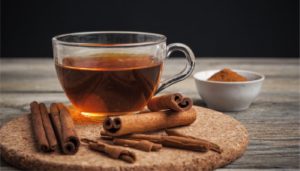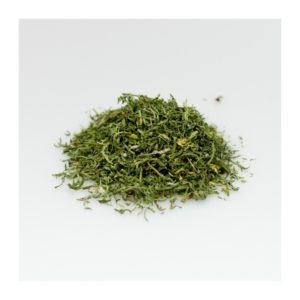Esta especia se extrae de un árbol llamado Cinnamomum aromaticum o cassia (la más comercializada actualmente) y el Cinnamomum zeylanicum o verum. Es un árbol de hoja perenne, de 10 a 15 metros de altura, procedente de Sri Lanka. Se aprovecha su corteza interna, que se obtiene pelando y frotando las ramas.
Se consume desde la antigüedad y siempre fue ha sido muy apreciada en la cocina, además se le atribuyen beneficios para la salud que tienen que ver con su carácter antioxidante gracias a su contenido en flavonoides (catequinas).
También tiene propiedades antibióticas (antimicrobiano, antifúngico y antivírico). Otra de sus cualidades es su actividad gastroprotectora, inmunomoduladora y la capacidad para regular la tensión arterial, así como controlar los niveles de azúcar y los lípidos en sangre.

OTROS BENEFICIOS PARA LA SALUD
- Ayuda a controlar la diabetes porque ayuda a bajar el nivel de glucosa en la sangre. Además de que ayuda a disminuir la resistencia a la insulina.
- Mejora trastornos digestivos como gases, problemas espasmódicos y sirve para tratar la diarrea, debido a su efecto antibacteriano, antiespasmódico y antiinflamatorio.
- Disminuye la fatiga y mejora el estado de ánimo porque aumenta la resistencia al estrés.
- Ayuda a combatir el colesterol y los triglicéridos por la presencia de antioxidantes.
- Ayuda en la digestión ya que tiene un efecto antibacteriano, antiespasmódico y antiinflamatorio.
- Combate infecciones de las vías respiratorias, ya que tiene un efecto secante en las mucosas y es un expectorante natural.
- Disminuye el apetito ya que es rica en fibras que aumentan la sensación de saciedad.
- Reduce la acumulación de grasa porque mejora la sensibilidad de los tejidos a la acción de la insulina.
- Disminuye la presión arterial, debido a sus propiedades antiinflamatorias y antioxidantes que ayudan a relajar los vasos sanguíneos.
- Ayuda a contrarrestar los dolores menstruales y para regular el período.

Siempre es bueno estar informado al 100% y consultar con tu médico de confianza antes de tomar cualquier suplemento.
Producto 100% natural, su uso está destinado al consumo como alimento.
EL CONSUMO DE ESTE PRODUCTO ES RESPONSABILIDAD DE QUIEN LO RECOMIENDA Y DE QUIEN LO USA
REFERENCIAS
Ramazani E, YazdFazeli M, Emami SA, Mohtashami L, Javadi B, Asili J, Tayarani-Najaran Z.Mol Biol Rep. 2020 Apr;47(4):2437-2445. doi: 10.1007/s11033-020-05284-y. Epub 2020 Mar 12.PMID: 32166553
Cinnamon (Cinnamomum verum and C. cassia) is a medicinal plant, widely-used as a culinary spice. …In this article, the effects of hydro-alcohol extract and essential oil of C. verum and C. cassia and its main bioactive component cinnamaldehyde, has been exa …
Gunawardena D, Karunaweera N, Lee S, van Der Kooy F, Harman DG, Raju R, Bennett L, Gyengesi E, Sucher NJ, Münch G.Food Funct. 2015 Mar;6(3):910-9. doi: 10.1039/c4fo00680a.PMID: 25629927
The aim of this investigation was to determine the anti-inflammatory activity of C. zeylanicum and C. cassia and elucidate their main phytochemical compounds. When extracts were tested in LPS and IFN-gamma activated RAW 264.7 macrophages, most of the anti-inflammatory acti …
Ramazani E, YazdFazeli M, Emami SA, Mohtashami L, Javadi B, Asili J, Tayarani-Najaran Z.Mol Biol Rep. 2020 Apr;47(4):2437-2445. doi: 10.1007/s11033-020-05284-y. Epub 2020 Mar 12.PMID: 32166553
Cinnamon (Cinnamomum verum and C. cassia) is a medicinal plant, widely-used as a culinary spice. …In this article, the effects of hydro-alcohol extract and essential oil of C. verum and C. cassia and its main bioactive component cinnamaldehyde, has been exa …
4) Three new compounds from Cinnamomum cassia.
He S, Jiang Y, Tu PF.J Asian Nat Prod Res. 2016;18(2):134-40. doi: 10.1080/10286020.2015.1057577. Epub 2015 Oct 26.PMID: 26498626
Three new compounds, including two new diterpenoids, named epianhydrocinnzeylanol (1) and cinnacasiol H (2), and one hydroxylasiodiplodin, (3R,4S,6R)-4,6-dihydroxy-de-O-methyllasiodiplodin (3), together with five known diterpenoids (4-8) and two known phenolic glycosides ( …
5) A new phenolic glycoside from the barks of Cinnamomum cassia.
Zeng J, Xue Y, Lai Y, Yao G, Luo Z, Zhang Y, Zhang J.Molecules. 2014 Oct 31;19(11):17727-34. doi: 10.3390/molecules191117727.PMID: 25365297 Free PMC article.
A new phenolic glycoside (1), named methyl 2-phenylpropanoate-2-O-beta-D-apiofuranosyl-(16)-O-beta-D-glucopyranoside, was isolated from the barks of Cinnamomum cassia, along with three known phenolic glycosides and four known lignan glycosides. …



